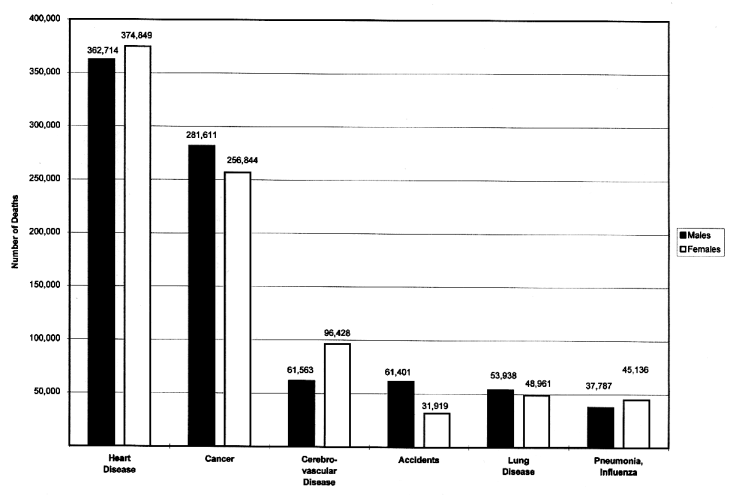Preventing Cancer

By choosing a lifestyle that avoids certain risks, you can help protect yourself from developing cancer. Many cancers are linked to factors that you can control.
Tobacco. Smoking and using tobacco in any form has been directly linked to cancer. Overall, smoking causes 30 percent of all cancer deaths. The risk of developing lung cancer is 10 times greater for smokers than for nonsmokers. The amount of risk from smoking depends on the number and type of cigarettes you smoke, how long you have been smoking, and how deeply you inhale. Smokers are also more likely to develop cancers of the mouth, throat, esophagus, pancreas, and bladder. And now there is emerging evidence that smoking can also cause cancer of the stomach and cervix.
The use of “smokeless” tobacco (chewing tobacco and oral snuff) increases the risk of cancer of the mouth and pharynx. Once you quit smoking or using smokeless tobacco, your risk of developing cancer begins to decrease right away.
Diet. What you eat may affect your chances of developing cancer. Scientists think there is a link between a high-fat diet and some cancers, particularly those of the breast, colon, endometrium, and prostate. Obesity is thought to be linked with increased death rates for cancers of the prostate, pancreas, breast, and ovary. Still other studies point to an increased risk of getting stomach cancer for those who frequently eat pickled, cured, and smoked foods. The National Cancer Institute believes that eating a well-balanced diet can reduce the risk of getting cancer. Americans should eat more high-fiber foods (such as whole-grain cereals and fruits and vegetables) and less fatty foods.
Sunlight. Repeated exposure to sunlight increases the risk of skin cancer, especially if you have fair skin or freckle easily. In fact, ultraviolet radiation from the sun is the main cause of skin cancer, which is the most common cancer in the United States. Ultraviolet rays are strongest from 11 a.m. to 2 p.m. during the summer, so that is when risk is greatest. Protective clothing, such as a hat and long sleeves, can help block out the sun's harmful rays. You can also use sunscreens to help protect yourself. Sunscreens with a number 15 on the label means most of the sun's harmful rays will be blocked out.
Alcohol. Drinking large amounts of alcohol (one or two drinks a day is considered moderate) is associated with cancers of the mouth, throat, esophagus, and liver. People who smoke cigarettes and drink alcohol have an especially high risk of getting cancers of the mouth and esophagus.
X-rays. Large doses of radiation increase cancer risk. Although individual x-rays expose you to very little radiation, repeated exposure can be harmful. Therefore, it is a good idea to avoid unnecessary x-rays. It's best to talk about the need for each x-ray with your doctor or dentist. If you do need an x-ray, ask if shields can be used to protect other parts of your body.
Industrial agents and chemicals. Exposure to some industrial agents or chemicals increases cancer risk. Industrial agents cause damage by acting alone or together with another cancer-causing agent found in the workplace or with cigarette smoke. For example, inhaling asbestos fibers increases the risk of lung disease and cancer. This risk is especially high for workers who smoke. You should follow work and safety rules to avoid coming in contact with such dangerous materials.
Being exposed to large amounts of household solvent cleaners, cleaning fluids, and paint thinners should be avoided. Some chemicals are especially dangerous if inhaled in high concentrations, particularly in areas that are not well ventilated. In addition, inhaling or swallowing lawn and garden chemicals increases cancer risk. Follow label instructions carefully when using pesticides, fungicides, and other chemicals. Such chemicals should not come in contact with toys or other household items.
Hormones. Taking estrogen to relieve menopausal symptoms (such as hot flashes) has been associated with higher-than-average rates of cancer of the uterus. Numerous studies also have examined the relationship between oral contraceptives (the Pill) and a variety of female cancers. Recent studies report that taking the Pill does not increase a woman's chance of getting breast cancer. Also, Pill users appear to have a lower-than-average risk of cancers of the endometrium and ovary. However, some researchers believe that there may be a higher risk of cancer of the cervix among Pill users. Women taking hormones (either estrogens or oral contraceptives) should discuss the benefits and risks with their doctor.
 Leading Causes of Death for Men and Women United States: 1995 Final Mortality Source: Department of Health and Human Services, “Monthly Vital Statistics Report,” June 12, 1997. |







